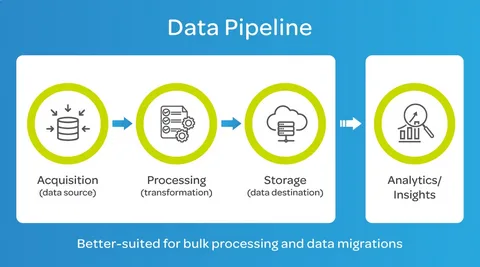Introduction
Imagine data analytics as a vast railway system. The trains are your datasets, the stations are your analytical models, and the passengers are the insights waiting to reach their destination. But what connects the stations, ensures the trains arrive on time, and reroutes traffic when tracks are busy? That invisible force is the Application Programming Interface (API). Like a network of tracks weaving through a landscape, APIs bind the data analytics pipeline together, ensuring smooth and reliable movement from raw data to actionable intelligence.
APIs as the Tracks Beneath the Data Trains
Consider a bustling metro system. The tracks don’t shout for attention, but without them, the trains would be useless. APIs play a similar yet critical role in analytics pipelines. They connect disparate sources—databases, cloud storage, social media feeds, IoT sensors—and deliver their contents into the analytics engine. Students enrolled in a Data Analytics Course often discover that without APIs, data integration is like herding wild horses. APIs bring order, guiding raw information through predefined paths and ensuring that every dataset reaches the correct processing hub.
Real-Time Flow: Turning Streams into Rivers
Imagine a dam releasing water into controlled irrigation channels. In the same way, APIs regulate the flow of streaming data, transforming chaotic trickles into reliable rivers of information. Whether it’s monitoring financial transactions in milliseconds or tracking sensors in a smart city, APIs ensure data arrives without bottlenecks. Learners in a Data Analytics Course in Hyderabad often practice building these real-time connections, experiencing first-hand how APIs can be the difference between reactive dashboards and proactive intelligence. In fast-paced industries like retail or fintech, this ability to harness streams of data in motion becomes a superpower.
Enabling Collaboration: APIs as Translators
Think of APIs as skilled interpreters at a global summit. Each system—CRM tools, ERP software, marketing platforms—speaks its own language. Without translation, the summit would dissolve into chaos. APIs bridge this gap, translating formats and protocols into a unified tongue that analytics systems can understand. By enabling this dialogue, they allow organisations to combine customer insights, operational metrics, and financial data into one cohesive narrative. Participants in a Data Analytics Course quickly see that mastering APIs isn’t about memorising technical syntax—it’s about learning how to build bridges between islands of information.
Scaling Pipelines: From Local Roads to Superhighways
As organisations grow, so does the volume of data. Picture a small village road suddenly forced to handle the traffic of a mega-city—it would collapse under the pressure. APIs provide the equivalent of superhighways, built to handle massive volumes of data traffic while maintaining speed and reliability. With features such as load balancing, rate limiting, and authentication, APIs help keep pipelines efficient and secure. For learners taking a Data Analytics Course in Hyderabad, this lesson often comes alive through case studies of scaling analytics platforms in sectors like e-commerce or healthcare, where terabytes of data move daily with clockwork precision.
Security and Governance: The Watchtowers Along the Tracks
No railway or highway system is complete without guards, checkpoints, and monitoring. APIs don’t just move data—they also protect it. Security tokens, encrypted communication, and authentication layers serve as watchtowers along the analytics journey. They ensure that only the right people access the correct data at the right time. By embedding governance rules, APIs help organisations maintain compliance with regulations such as GDPR or HIPAA. For students in advanced programmes, this reinforces that analytics isn’t just about speed—it’s also about trust, responsibility, and safeguarding the integrity of insights.
APIs as Catalysts for Innovation
Beyond their role in logistics, APIs act as creative sparks. They enable developers and analysts to plug in new tools, experiment with machine learning models, and integrate emerging technologies such as natural language processing and image recognition. It’s like giving a chef access to a pantry filled with exotic spices—suddenly, the menu of possibilities expands. In professional practice, teams leverage APIs to pilot predictive maintenance, personalised recommendations, or fraud detection systems with remarkable agility. This capacity for experimentation is what keeps analytics pipelines not just functional but also future-ready.
Conclusion
APIs may not always take the spotlight, but like tracks beneath a train, they determine whether a journey succeeds or fails. They integrate scattered sources, streamline real-time flows, scale with organisational needs, enforce security, and unlock space for innovation. For professionals and learners alike, appreciating APIs means recognising them as the silent engines of progress in modern analytics.
ExcelR – Data Science, Data Analytics and Business Analyst Course Training in Hyderabad
Address: Cyber Towers, PHASE-2, 5th Floor, Quadrant-2, HITEC City, Hyderabad, Telangana 500081
Phone: 096321 56744

